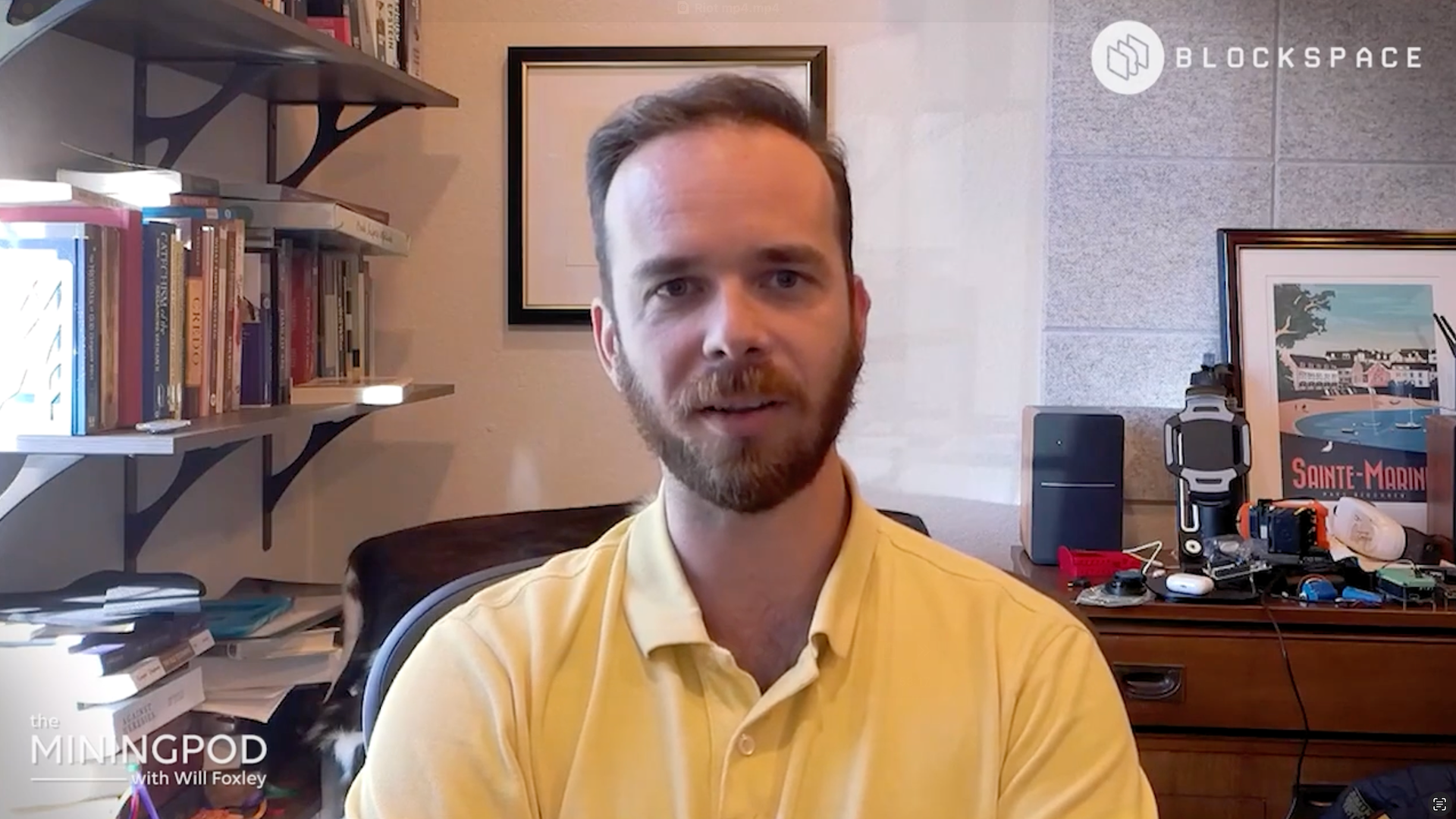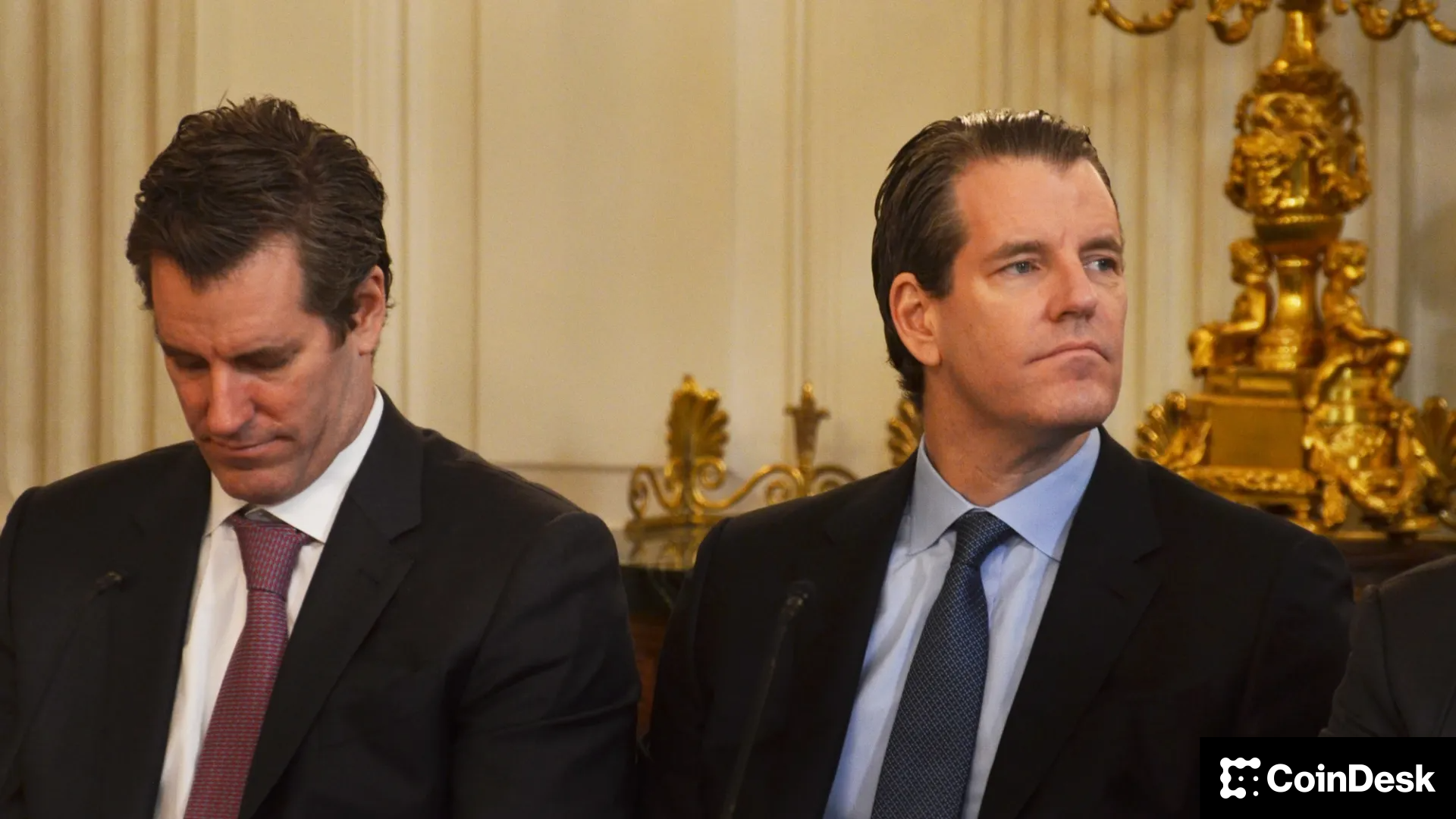Uncategorized
Pierre Rochard, the Bitcoin Maximalist OG, on Mining, Markets and Modern Finance

Pierre Rochard, who calls himself a “bitcoin maximalist OG,” first discovered Bitcoin in 2012 while studying at UT Austin. With interests in Austrian economics and open-source software, he was “captivated” by bitcoin as the intersection of both. He became an early thought leader, co-founding the Satoshi Nakamoto Institute to house foundational writings and cypherpunk philosophy.
Across roles at BitPay, Kraken, and most recently Riot Platforms (RIOT), his work has spanned bitcoin infrastructure and advocacy. At Riot, he led responses to environmental criticisms, including a viral parody video that “put the critics on the defensive” and reframed the debate around mining and value creation.
Pierre Rochard is a speaker at Consensus 2025, in Toronto, May 14-16. Get your pass here.
“Critics think mining is wasteful because they don’t believe bitcoin has value,” Rochard said. “But it’s about monetary sovereignty — the ability to control your own money.”
Now, with The Bitcoin Bond Company, he is taking on the next frontier: unlocking bitcoin for fixed-income investors.
Unlike Michael Saylor’s long-only strategy, Rochard wants to build “bankruptcy-remote, bitcoin-only structures” with clear life-cycles and risk-tranching. The idea is to make Bitcoin more palatable to traditional credit allocators.
His goal? Acquire $1 trillion in bitcoin over the next 21 years — market conditions permitting.
On the price cycle, Rochard believes the four-year halving model is losing relevance for price prediction purposes. “Bitcoin’s CAGR is now tied to interest rates,” he said, noting its shift toward becoming a global macro asset. “Higher Fed rates pull capital out of Bitcoin — that’s what slows adoption.”
While education remains a major hurdle, he’s optimistic. “Ten years ago, this idea was laughed off. Today, Bitcoin-backed credit products are inevitable.”
At Consensus 2025, Pierre is focused on accelerating that education, especially among institutions looking to diversify beyond real estate and equities.
Rochard was also clear-eyed about the risks and hurdles in bitcoin adoption. “The biggest challenge is education,” he emphasized. “Most investors have never seen a fixed-income product backed purely by bitcoin. They’re used to real estate or corporate debt — this is a new asset class for them.”
When asked about concerns like low transaction fees or empty blocks in 2025, Rochard pushed back. “People worry about low fees, but that assumes a static system. If there’s ever an attack or censorship, fees skyrocket — and miners spin up. It’s anti-fragile by design.”
Ultimately, Rochard’s pitch is simple: “Bitcoin is no longer a fringe experiment. It’s a core monetary technology — and it’s time the credit markets caught up.”
Disclaimer: Parts of this article were generated with the assistance from AI tools and reviewed by our editorial team to ensure accuracy and adherence to our standards. For more information, see CoinDesk’s full AI Policy.
Business
Crypto Trading Firm Keyrock Buys Luxembourg’s Turing Capital in Asset Management Push

Crypto trading firm Keyrock said it’s expanding into asset and wealth management by acquiring Turing Capital, a Luxembourg-registered alternative investment fund manager.
The deal, announced on Tuesday, marks the launch of Keyrock’s Asset and Wealth Management division, a new business unit dedicated to institutional clients and private investors.
Keyrock, founded in Brussels, Belgium and best known for its work in market making, options and OTC trading, said it will fold Turing Capital’s investment strategies and Luxembourg fund management structure into its wider platform. The division will be led by Turing Capital co-founder Jorge Schnura, who joins Keyrock’s executive committee as president of the unit.
The company said the expansion will allow it to provide services across the full lifecycle of digital assets, from liquidity provision to long-term investment strategies. «In the near future, all assets will live onchain,» Schnura said, noting that the merger positions the group to capture opportunities as traditional financial products migrate to blockchain rails.
Keyrock has also applied for regulatory approval under the EU’s crypto framework MiCA through a filing with Liechtenstein’s financial regulator. If approved, the firm plans to offer portfolio management and advisory services, aiming to compete directly with traditional asset managers as well as crypto-native players.
«Today’s launch sets the stage for our longer-term ambition: bringing asset management on-chain in a way that truly meets institutional standards,» Keyrock CSO Juan David Mendieta said in a statement.
Read more: Stablecoin Payments Projected to Top $1T Annually by 2030, Market Maker Keyrock Says
Business
Crypto Trading Firm Keyrock Buys Luxembourg’s Turing Capital in Asset Management Push

Crypto trading firm Keyrock said it’s expanding into asset and wealth management by acquiring Turing Capital, a Luxembourg-registered alternative investment fund manager.
The deal, announced on Tuesday, marks the launch of Keyrock’s Asset and Wealth Management division, a new business unit dedicated to institutional clients and private investors.
Keyrock, founded in Brussels, Belgium and best known for its work in market making, options and OTC trading, said it will fold Turing Capital’s investment strategies and Luxembourg fund management structure into its wider platform. The division will be led by Turing Capital co-founder Jorge Schnura, who joins Keyrock’s executive committee as president of the unit.
The company said the expansion will allow it to provide services across the full lifecycle of digital assets, from liquidity provision to long-term investment strategies. «In the near future, all assets will live onchain,» Schnura said, noting that the merger positions the group to capture opportunities as traditional financial products migrate to blockchain rails.
Keyrock has also applied for regulatory approval under the EU’s crypto framework MiCA through a filing with Liechtenstein’s financial regulator. If approved, the firm plans to offer portfolio management and advisory services, aiming to compete directly with traditional asset managers as well as crypto-native players.
«Today’s launch sets the stage for our longer-term ambition: bringing asset management on-chain in a way that truly meets institutional standards,» Keyrock CSO Juan David Mendieta said in a statement.
Read more: Stablecoin Payments Projected to Top $1T Annually by 2030, Market Maker Keyrock Says
Business
Gemini Shares Slide 6%, Extending Post-IPO Slump to 24%

Gemini Space Station (GEMI), the crypto exchange founded by Cameron and Tyler Winklevoss, has seen its shares tumble by more than 20% since listing on the Nasdaq last Friday.
The stock is down around 6% on Tuesday, trading at $30.42, and has dropped nearly 24% over the past week. The sharp decline follows an initial surge after the company raised $425 million in its IPO, pricing shares at $28 and valuing the firm at $3.3 billion before trading began.
On its first day, GEMI spiked to $45.89 before closing at $32 — a 14% premium to its offer price. But since hitting that high, shares have plunged more than 34%, erasing most of the early enthusiasm from public market investors.
The broader crypto equity market has remained more stable. Coinbase (COIN), the largest U.S. crypto exchange, is flat over the past week. Robinhood (HOOD), which derives part of its revenue from crypto, is down 3%. Token issuer Circle (CRCL), on the other hand, is up 13% over the same period.
Part of the pressure on Gemini’s stock may stem from its financials. The company posted a $283 million net loss in the first half of 2025, following a $159 million loss in all of 2024. Despite raising fresh capital, the numbers suggest the business is still far from turning a profit.
Compass Point analyst Ed Engel noted that GEMI is currently trading at 26 times its annualized first-half revenue. That multiple — often used to gauge whether a stock is expensive — means investors are paying 26 dollars for every dollar the company is expected to generate in sales this year. For a loss-making company in a volatile sector, that’s a steep price, and could be fueling investor skepticism.
-

 Business11 месяцев ago
Business11 месяцев ago3 Ways to make your business presentation more relatable
-

 Fashion11 месяцев ago
Fashion11 месяцев agoAccording to Dior Couture, this taboo fashion accessory is back
-

 Entertainment11 месяцев ago
Entertainment11 месяцев ago10 Artists who retired from music and made a comeback
-

 Entertainment11 месяцев ago
Entertainment11 месяцев ago\’Better Call Saul\’ has been renewed for a fourth season
-

 Entertainment11 месяцев ago
Entertainment11 месяцев agoNew Season 8 Walking Dead trailer flashes forward in time
-

 Business11 месяцев ago
Business11 месяцев ago15 Habits that could be hurting your business relationships
-

 Entertainment11 месяцев ago
Entertainment11 месяцев agoMeet Superman\’s grandfather in new trailer for Krypton
-

 Entertainment11 месяцев ago
Entertainment11 месяцев agoDisney\’s live-action Aladdin finally finds its stars




